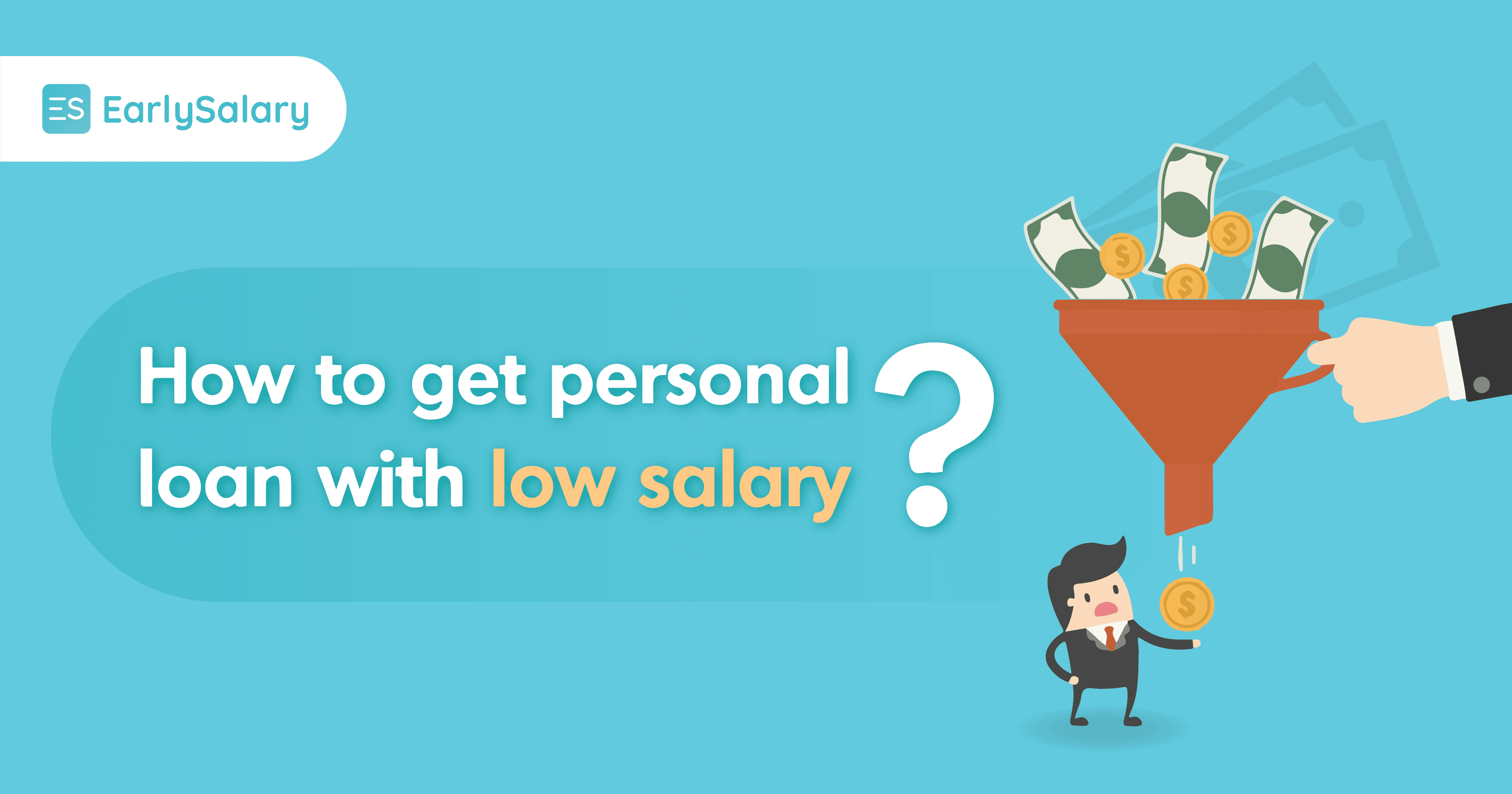- Home
- Blogs
- Personal Loan
- How To Get Personal Loan With Low Salary
How to Get a Personal Loan with a Low Salary?
Reviewed by: Fibe Research Team
- Updated on: 29 Dec 2023
Reviewed by: Fibe Research Team

Income is a crucial factor for lenders, so it is sometimes difficult to secure a personal loan with a minimum salary from a traditional financial institution. However, many inclusive online lenders offer personal loans with simplified eligibility criteria, including income parameters.
You can also employ certain strategies to improve your eligibility and increase the probability of getting a loan. To know more about how to get a personal loan on a low salary by improving your eligibility, read on.
You can qualify for a personal loan on a low salary by taking the following steps:
While securing a personal loan can be challenging if you have a low salary, the most essential thing to do is to choose the lender carefully. You can compare multiple lenders before zeroing in on a loan offer. Check the eligibility terms of all lenders and see which one has the lowest income requirement.
While some lenders like Fibe approve applications of borrowers earning just ₹15,000 per month in non-metro cities, other lenders may have a higher salary requirement. Spending a little time researching can help you find the right lender who matches your earnings. This will help you qualify for a loan with ease.
Another way to boost your eligibility as a low-income borrower is to ensure your credit score is high. A good credit score signifies that you are responsible with credit, helping lenders make a decision that works in your favour.
At Fibe, you don’t need to worry about maintaining a good score. It is because our alternate credit scoring mechanism helps us offer loans even to those who are new to credit. Simply check our easy-to-meet eligibility criteria and apply for a personal loan hassle free!
While your salary may be low, you may earn income from other sources like investments, rental earnings from property or land, freelance income and more. You can get a personal loan even with a low salary by proving that you have the funds to repay on time and in full.
If you have a bank account or an investment with a bank or NBFC, the chances of getting a personal loan with a low income requirement with the same lender are higher. This is because the lender already has your profile on record.
Lenders prefer to provide loans to those who don’t have many existing financial obligations. Hence, you can also ensure a higher possibility of fulfilling a lender’s eligibility requirements by freeing yourself from debt.
Some lenders offer loans secured by an asset, such as an FD or government bonds. Pledging an asset as collateral allows you to get funds even if your salary is low.
If your spouse or parent has a good salary, you can jointly apply for a personal loan with them. In this case, lenders consider your salary along with your co-applicant’s income, which can help you qualify for the loan.
However, remember that the responsibility to repay falls on both of you. Your co-applicant needs to be ready to take on this responsibility in the event that a lack of funds causes you to miss an EMI or default.
Here are some of the basic documents lenders require you to submit to get a low-salary personal loan:
Using all these tips, you can get a low-salary personal loan when you have a need for funds. On Fibe, getting access to Instant Cash is easy. Simply meet our eligibility terms and apply on our website or download our Personal Loan App and get instant funds!
Yes, you can get loan approval depending on the lender’s terms. All you have to do is show other sources of income and meet the rest of the lender’s eligibility terms. At Fibe, you can avail of a personal loan if your minimum in-hand salary is ₹15,000/month in non-metro cities and ₹18,000/month in metro cities.
If your income is less, ensure you opt for a lender with easy-to-meet eligibility terms. You can avail a loan at Fibe even with a monthly income of ₹15,000.
Lenders set income criteria based on their discretion. For instance, Fibe offers a personal loan with a minimum salary of ₹15,000 per month if you live in a non-metro city.
When deciding on whether to approve your loan application, financial institutions account for your income and other factors. It helps them ascertain your ability to repay the loan. Mostly, lenders sanction a lower loan amount if your salary is low.
Yes, certain lenders provide personal loans even to new employees. In such cases, you can also choose a salary advance.
When lenders assess your personal loan eligibility, income is one of the essential elements that they consider. This is mainly because your income, along with other factors, determines your repayment ability.
The minimum salary criteria vary from one lender to another. If you opt for a loan at Fibe, you can qualify if your monthly income is ₹15,000.
Getting a personal loan is possible after you receive the first paycheque. The main requirement that the lender may put forward is a stable and regular source of income.
Yes, you can get a personal loan with a low income if you reside and work in non-metros, too. At Fibe, you can get an instant loan with a salary of ₹15,000 a month if you reside in a non-metro area.
References: